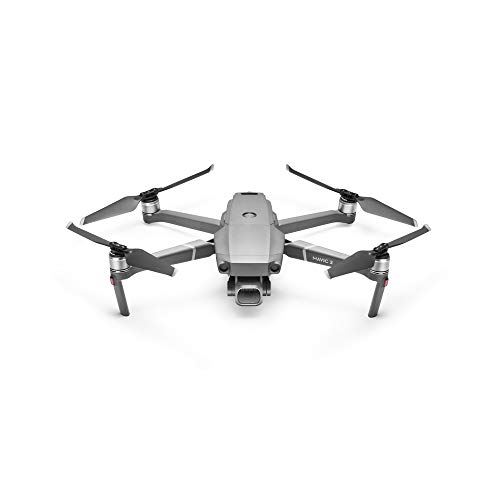DJI Mavic 2 (Pro/Zoom) – Two high-end drones in comparison
With the DJI Mavic 2 Pro and the DJI Mavic 2 Zoom, the Chinese drone manufacturer DJI has two absolute top drones for ambitious hobby filmmakers in its program. Whether it’s a 4K Hasselblad camera (Pro) or an optical dual zoom (Zoom) – both quadrocopters offer equipment at the highest level.
Who should rather opt for the Mavic 2 Pro and who is better advised with the Mavic 2 Zoom, we clarify in our following detailed product comparison.
DJI Mavic 2 Pro or DJI Mavic 2 Zoom?
The only difference between the two high-end drones is the camera and price. While the Mavic 2 Pro is equipped with a 20-megapixel Hasselblad camera with a 1-inch CMOS sensor and a variable aperture, the Zoom variant comes with a fully stabilized optical dual zoom, 12-megapixel 1/2.3-inch sensor and fixed aperture.
The Mavic 2 Pro also has 10-bit color depth, while the Zoom “only” records in 8-bit. The Pro version is about $200 more expensive than the Zoom version.
Most hobby filmmakers will probably opt for the DJI Mavic 2 Pro simply because of its significantly larger sensor. For some, however, the optical dual zoom and the associated dolly zoom recording mode may be a decisive argument for buying the zoom variant.
But whether you end up buying the Mavic 2 Pro or the Mavic 2 Zoom drone, a DJI Mavic 2 is currently one of the best, if not the best drone on the market.
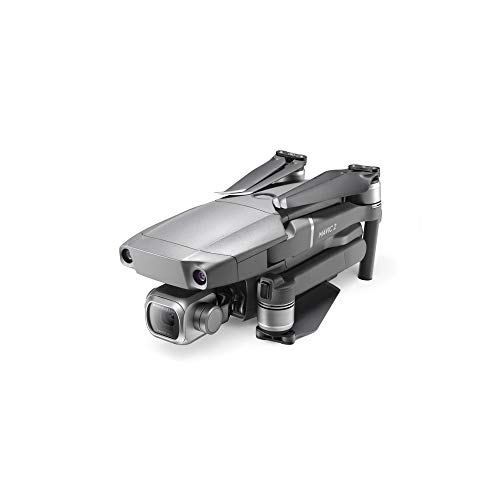
Processing quality and design
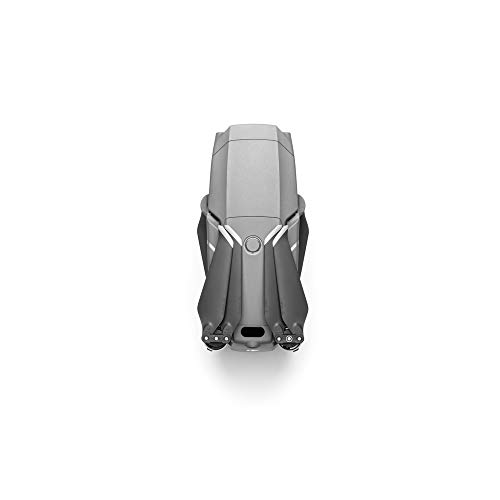
On the outside, little has changed compared to the predecessor model. The Mavic 2 comes in a similarly simple, gray design as the DJI Mavic Pro.
Only the dimensions have increased slightly – at 21.4 x 9.1 x 8.4 cm, the new Mavic is minimally larger when folded than in the first version. When folded out, it measures 32.2 × 24.2 × 8.4 cm. But not only the proportions of the foldable drone with camera have changed, the aerodynamics have also been optimized. The revised housing of the Mavic 2 has a total of 19% less air resistance than that of the Mavic Pro.
Functional and well thought out
The workmanship of the individual components is at the highest level, as is typical for DJI, and the overall construction appears robust and resistant. In our opinion, the Mavic 2 is not quite as fancy as the DJI Mavic Air, but the design is functional and well thought-out.
The joints make a solid impression and engage snugly when the booms are unfolded. The wobbly gimbal bracket of the Mavic Pro has been replaced by a practical Plexiglas hood. The drone’s cooling slots are well protected against dust and moisture due to their positioning and are additionally secured by built-in grids.
Changing the rotors is also quick thanks to quick-release propellers, and the controller’s removable control sticks are also a useful innovation that let you transport the DJI Mavic 2 even more easily.
The design of the status indicator on the LiPos is also new – a four-piece LED light ring now provides information about the charging status of the batteries. There are two position LEDs on the front booms, while the lights on the rear arms are status LEDs.
Last but not least, DJI has added two new landing lights (LEDs) to the underside of the Mavic 2. With the help of the manually switchable underbody lighting, the drone achieves an even more stable flight attitude near the ground and performs ultra-precise landings, even in difficult lighting conditions.
Technical data of the DJI Mavic 2
Equipped with a 3850 mAh, 15.4 V 4S LiPo, the DJI Mavic 2 reaches speeds of up to 45 mph (72 km/h) and, according to the manufacturer, up to 31 minutes of flight time. In practice, this value is usually about 5 minutes lower, but it is still the absolute top. The battery of the DJI Mavic 2 is charged within about 75 minutes via the included charger.
At 907 grams (Pro) and 905 grams (Zoom), the Mavic 2 is slightly heavier than the Mavic Pro (734 grams). To operate the copter in your country, you therefore may need both a corresponding drone liability insurance and a drone registration number.
High range and signal quality
One of the many highlights of the DJI Mavic 2, besides the outstanding camera, is certainly the remarkable maximum range of 5 miles (8 kilometers) (FCC standard) or 3 miles (5 kilometers) (CE standard). While drones are only allowed to be flown on sight in many countries, the high maximum range should nevertheless also cause joy in Europe. The strong transmission power results in an outstanding signal quality and makes an extremely stable live image transmission in Full HD (1080p) possible.
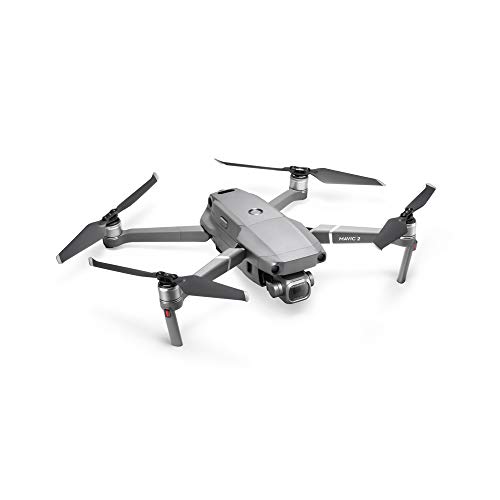
Photos and videos are recorded either on the drone’s 8 GB internal memory or on a microSD card of up to 128 GB (not included).
For the necessary flight stability as well as the required precision in automatic flight modes, the Mavic 2 Pro and the Mavic 2 Zoom can rely on both GPS and GLONASS. Both systems provide extremely accurate attitude control and navigation of the drone, keeping it precisely on course even in moderate winds.
The Mavic 2’s 4K camera is held and moved by a 3-axis gimbal. The interaction of this gimbal camera system is clearly one of the best currently available in the hobby drone sector.
In addition, the DJI Mavic 2 has various cameras and infrared sensors for positioning and obstacle detection.
Anti-collision system
Equipped with a total of eight additional cameras and two infrared sensors, the DJI Mavic 2 has an omnidirectional obstacle detection system. Even though the cameras and sensors are installed on all sides of the drone, the system is not a true 360° protection. Certain angles are not fully covered and the side cameras are only enabled in ActiceTrack and Tripod modes.
While the front, rear and sides are all cameras for collision avoidance, the top and bottom each add an infrared sensor for distance measurement. This allows you to maneuver safely with the Mavic 2 Pro or Mavic 2 Zoom even under hall roofs, bridges or other objects without fear of collision.
However, obstacles that are too thin or small, such as very narrow branches, will probably not always be detected by the anti-collision system. A certain amount of caution should therefore always be exercised, not least because DJI does not cover damage resulting from flying left and right in this mode under warranty.
Before starting: Setup and activation
Before you take off with your DJI Mavic 2 Pro or DJI Mavic 2 Zoom for the first time, there are a few things to keep in mind. First, fully charge the batteries of the drone and remote control. We find the microUSB charging cable for the controller integrated in the power supply very handy here.
Then mount the propellers and remove the protective cap from the gimbal. After that, first turn on the remote control and then the drone. Now attach your smartphone to the cradle and launch the DJI Go 4 app.
Now follows the one-time activation of the DJI Mavic 2, which is also the beginning of the warranty claim. After you have accepted the terms of use and assigned a name for your drone, you can select the desired control mode (1, 2 or 3). Further assignment settings can be made later in the app.
The C1 and C2 buttons on the back of the controller can then be assigned with desired commands. However, this can also be done later in the app.
Subsequently, you select whether values such as altitude and speed should be output metrically (m/s or km/h) or imperially (mph) and decide whether the drone should initially start in beginner mode. In this mode, The Mavic 2 will only take off if GPS connectivity is available and altitude and range are limited to 30m.
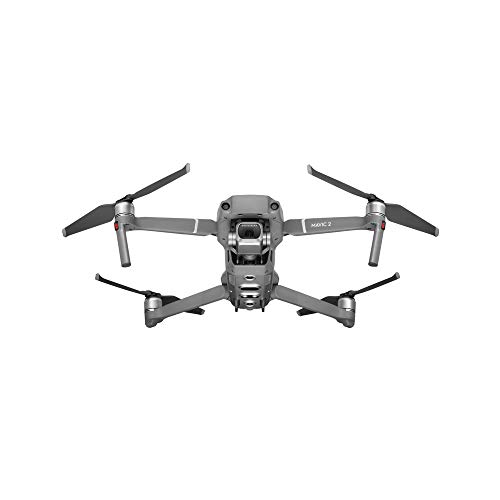
Finally, you need to create a DJI account or log in with your existing account. After that, the drone will be activated. Within the next 48 hours, DJI Care Refresh can then still be optionally activated.
After the successful activation of the Mavic 2, there is the possibility to switch to the so-called Academy, where you can learn the drone control in a simulator. If you already have some experience with multicopters, you can skip the introduction and finally take off.
Control and flight characteristics
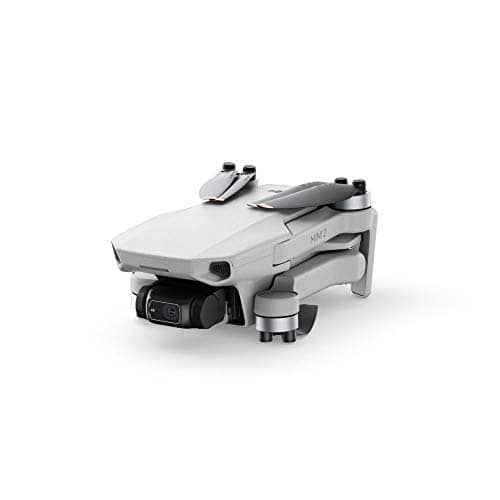
Once in the air, you immediately notice the remarkable flight stability of the DJI Mavic 2 Pro or Mavic 2 Zoom. After the automatic start, the copter hovers on the spot as if rooted to the spot and cannot be influenced even by moderate wind.
There are three different modes to choose from for flight: Normal/Position (P), Sport (S) and Tripod (T), which can be selected via a new slider on the side of the controller – an extremely practical innovation in our opinion, as it allows you to switch to Tripod mode in a flash without having to activate it in the app.
Another innovation of the Mavic 2 is the automatic taking of a photo during take-off. By taking the photo, the copter can return to its starting position even more accurately. By the way, the Mavic 2 does this fully automatically in case of low battery or possible signal loss.
Thanks to the revised low-noise propellers, the Mavic 2 has become slightly quieter than the Mavic Pro. However, those who don’t mind the loudness of the old rotors will be happy, because the old propellers of the Mavic Pro also fit on the two new Mavic 2 models.
For even better in-flight planning, the Mavic 2 not only displays the battery charge level, but also the calculated remaining flight time.
By the way, both versions of the Mavic 2 can alternatively be operated with the DJI Goggles (RE) (link to Amazon*).
Photos & Videos: The camera of the DJI Mavic 2 Pro
Both the DJI Mavic 2 Pro and the DJI Mavic 2 Zoom have an outstanding camera. At the same time, this is also where the biggest difference between the two top models can be found.
The 4K camera of the DJI Mavic 2 Pro comes from the Swedish camera specialist Hasselblad and is clearly one of the best currently available in the hobby drone sector. Compared to the Mavic 2 Zoom, the Hasselblad L1D-20c camera’s four times larger sensor with an ISO of up to 12800 makes the Mavic 2 Pro superior, especially in low-light conditions.
The camera has a 1-inch CMOS sensor with 20 megapixels and shoots video at up to 4K (3840 x 2160) resolution at a maximum of 30 fps. Up to 60 fps is available in 2.7K and even 120 fps in Full HD.
Thanks to a bit rate of 100 Mbit/s, the videos recorded either in MOV or MP4 have an outstanding image quality. Both the H.264 compression standard and the new HEVC (H.265 codec) are now supported.
Also new to the Mavic 2 Pro is Dlog-M (10-bit) mode, which supports HDR video (HLG 10-bit) and can now display 1.07 billion, rather than just 16.78 million colors (8-bit).
Photos are taken by the Mavic 2 Pro in 5472 x 3648 pixels. Continuous shooting is also possible here. These are saved in JPEG or DNG RAW.
The camera of the Mavic 2 Pro has a variable aperture from f/2.8 to f/11 and has a field of view of 77° with a focal length of 28 millimeters. Thanks to the adjustable aperture, the camera excels in both dark and bright light conditions and always delivers brilliant photos and videos.
Maximum video resolutions
- 4K (3840 x 2160) @ 30 fps
- 2,7K (2688 x 1512) @ 60 fps
- Full HD (1920 x 1080) @ 120fps
DJI Mavic 2 Zoom Camera
Unlike the Mavic 2 Pro, the camera of the Mavic 2 Zoom is not made by Hasselblad, but by DJI. Although the sensor of the Mavic 2 Zoom is a bit smaller than the Pro version with 1/2.3 inches and 12 megapixels, the Mavic 2 Zoom has a dual optical zoom.
The focal length is between 24 and 48 millimeters, and the camera’s FOV (field of view) is between 83° and 48°. The aperture is fixed, but varies between f/2.8 (24 mm) and f/3.8 (48 mm). Unlike the Mavic 2 Pro, the Mavic 2 Zoom’s camera creates images in 8 bits, rather than 10 bits.
Combining the lossless optical zoom with the digital zoom, image details can be enlarged up to four times with the Mavic 2 Zoom in full HD without sacrificing quality.
Both drone models feature hybrid autofocus, consisting of phase and contrast autofocus. According to DJI, this is said to work about 40% faster and also more accurately than the previous generation.
With the Dolly Zoom and High Resolution Photo features, the Mavic 2 Zoom has two modes that are not available on the Mavic 2 Pro.
Dolly Zoom describes the ability to zoom into a shot while the drone is moving away from the object being filmed. This creates unique camera movements that bring a bit of Hollywood to your own shots.
With High Resolution Photo, the copter takes several individual images and then combines them independently into a high-resolution 48 megapixel photo.
Flight and shooting modes of the DJI Mavic 2
With the DJI Mavic 2 Pro as well as the DJI Mavic 2 Zoom, you have a variety of automatic flight and shooting modes at your disposal. On the one hand, the different features offer the necessary freedom for creativity, on the other hand, they facilitate the creation of impressive film and photo shots immensely. In the following, we will show you some of the most interesting modes and present the innovations compared to the Mavic Pro:
Hyperlapse
The Hyperlapse mode automatically creates time-lapse recordings and is a special highlight of the Mavic 2. In the various sub-modes Free, Circle, Course Lock and Waypoint, you plan the flight route and then let the drone automatically make a recording. Without any special external software, the Mavic 2 then calculates a time-lapse video and saves it as a fully edited file.
ActiveTrack 2.0
The ActiveTrack 2.0 mode for tracking objects and people, which has been improved compared to its predecessor, is another highlight of the DJI Mavic 2 and now works up to the drone’s maximum speed of approx. 45 mph (72 km/h). Another new feature is that the drone now no longer loses sight of moving objects if they are temporarily obscured by obstacles. The software interpolates the probable path of the object in the future and can now track it even more reliably.
Furthermore, ActiveTrack 2.0 now works with both the main camera sensors and the other camera sensors. However, these only support the drone up to a certain speed.
Waypoints 2.0
New in Waypoint 2.0 mode is that objects no longer have to be flown over initially – they can simply be marked in the DJI Go 4 app. In addition, POIs (points of interest) can now be set and photo and video shoots can be planned in advance.
Point of Interest 2.0
In the new POI 2.0 mode, objects or people to be avoided can now simply be marked on the display with a finger, without having to maneuver the drone over the object first – a really time-saving innovation. Speed, altitude and distance can be freely selected.
Dolly
In Dolly mode (Mavic 2 Zoom only), the drone zooms into a shot while simultaneously moving away from the subject being filmed. This creates a unique visual effect.
Quickshot-Modi
Quickshots, inherited from the Mavic Air, let you automatically create short video clips that can even be set to music. The following modes are available:
In Dronie mode, you mark an object or person to film. The copter then moves away from you, gently rising as it does so. With Circles and Helix, you let the Mavic 2 fly a circle or spiral around you, respectively. You will always remain in the center of the image, even if you are moving.
In Rocket mode, the drone flies vertically in the air while tilting the gimbal down to keep the pilot in the frame. In Boomerang mode, the drone first moves away from you before returning afterwards.
In Asteroid mode, the Mavic 2 lowers itself out of the sky, keeping the pilot in view at all times. An initial globe effect makes the drone’s descent look like the impact of an asteroid from space in the resulting video – right next to you.
More features
For unforgettable landscape shots, the Mavic 2 offers several panorama modes to choose from. With 180°, 360°, vertical and spherical panorama, the amateur photographer has four different options to capture the perfect sunset.
Unfortunately, the coordinate mode known from the Mavic Pro and the terrain follow mode are not yet available.
Cinematic-Modus
In Cinematic mode, the drone exhibits altered braking behavior and comes to a smooth stop after releasing the control sticks. The yaw movement of the drone (rotation to the left/right) is also slowed down in this mode. This results in even smoother camera movements.
TapFly
With this feature, the drone will automatically fly to a specific destination. Simply tap the desired target position with your finger on the app’s display and the Mavic 2 will reach it on its own.
The remote control
The remote control of the DJI Mavic 2 Pro and Mavic 2 Zoom looks very similar to the previous version. What is new, however, is the improved signal transmission system DJI OcuSync 2.0, which allows the Mavic 2 to be the first drone to automatically switch between the 2.4 GHz frequency band and 5.8 GHz frequency band during flight.
Thanks to several technical improvements, OcuSync 2.0 has once again significantly improved both the signal quality and range of the DJI Mavic 2. Unlike the Mavic Pro, for example, the live drone image is now transmitted in full HD (1080p), up to a theoretical range of 5 miles (8 kilometers) maximum.
Also new is a slider on the side of the controller, which can now be used to switch between the three different flight modes in a flash.
The buttons for video and photo capture, as well as gimbal and zoom control, are easy to reach, and the RTH button and the assignable buttons on the back of the remote also feel properly placed. The control sticks feel quality and can conveniently be unscrewed and stored in the controller for transport.
The DJI Go 4 app works flawlessly and comes up with a clear interface and menu navigation. The app is available for free in the Apple App Store and Google Play Store.
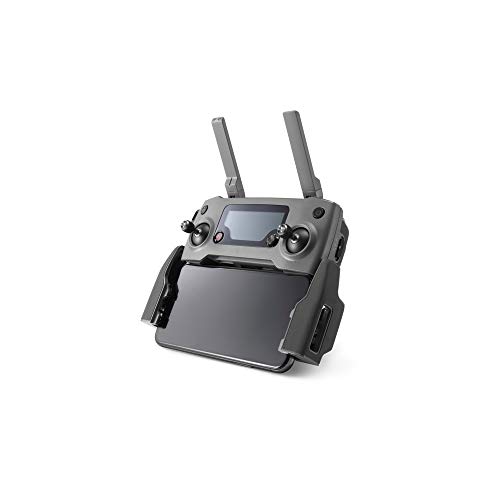
Optionally available: The DJI Smart Controller
For those for whom the normal controller with smartphone is not enough, the DJI Smart Controller is an optional remote control with integrated display for the DJI Mavic 2 models. The controller, which is quite expensive at over 600 dollars, has a 5.5-inch 1080p touchscreen display with outstanding brightness.
The Smart Controller’s fixed display is already known to some as the CrystalSky monitor and therefore has the same specifications. The display’s high brightness (1000 cd/m²) trumps ordinary smartphones by double on average and delivers crystal-clear colors. Thanks to the so-called SRE mode, the brightness, contrast, and color temperature adapt at any time according to the prevailing light conditions and thus guarantee an optimal picture under all weather conditions.
By the way, the Android-based Smart Controller is supposed to work at temperatures of up to -20° Celsius. In addition to the excellent display, the Smart Controller’s intuitive usability and easy-to-access functions are particularly impressive.
The Smart Controller also has a microphone and a speaker. So you can comment live on your vacation recordings or leave comments in videos for later editing.
Whether the optional controller for the DJI Mavic 2 Pro and DJI Mavic 2 Zoom is worth the money is up to each person to decide. In some situations, the excellent screen can definitely be an advantage and therefore tip the scales for one or the other drone pilot.
The Fly More Kit
There is no Fly More Combo for the DJI Mavic 2, but a Fly More Kit. Included are two LiPos, a car charger, a battery charging station, a battery powerbank adapter, four low-noise propellers and a shoulder bag.
DJI Care Refresh
DJI Care Refresh (link to DJI store) is an optional warranty extension for DJI drones. For currently 139 Euros, you get up to two replacement units within one year. It also covers various damages, such as collisions or water damage.
Scope of delivery
- DJI Mavic 2 Pro (or Zoom)
- LiPo battery (3850 mAh, 15.4 V)
- Controller (3950 mAh)
- Charger with power adapter
- Charging/connection cable for Android & iOS
- 3 pairs of propellers
- Gimbal protector
- 1 pair of spare control sticks
- Instruction manuals
Conclusion
One thing is for sure: The DJI Mavic 2 drones are absolutely worth their money. Regardless of whether you ultimately choose the Pro or the Zoom variant, you absolutely can’t go wrong with buying a DJI Mavic 2. In our opinion, the two DJI models are currently the two best drones with cameras. Only the Autel EVO II series can currently be used for comparison.
The camera gimbal system delivers brilliant 4K footage and, together with the many flight and recording modes, lets you take impressive photos and videos. Despite the compact, foldable design, the Mavic 2 drones get flight times of nearly 30 minutes and reach speeds of up to 45 mph (72 km/h).
Thanks to the new OcuSync 2.0, the DJI Mavic 2 has outstanding signal quality and transmits the Full HD live image without interference, even at long distances.
In the end, you’re spoiled for choice between the Mavic 2 Pro and Mavic 2 Zoom. However, we hope to have made the decision a little easier for you with our product description!

